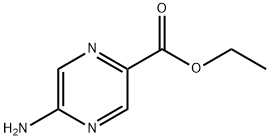In a pharmaceutical research lab, scientists are studying the properties of aspirin, a commonly used medication. One critical aspect they need to understand is its polarity. Derived questions include:
1.How does the polarity of aspirin affect its solubility?
2.What implications does the polarity of aspirin have for its biological activity?
What is the polarity of aspirin?
Related Products More >
-
- 108-80-5
- USD 50.0000
- 50kg
-
- 108-78-1
- USD 4.5000
- 25kg
-
- 4559-86-8
- USD 750.0000
- 170kg
-
- 77182-82-2
- equest For Quotation
-
- 70131-50-9
- equest For Quotation



 沪ICP备2021018848号-5
沪ICP备2021018848号-5

Aspirin, also known as acetylsalicylic acid, is a polar molecule. This is due to the presence of various functional groups in its structure, including carboxyl (-COOH) and ester (-COO-) groups. These groups contain oxygen atoms that are partially negatively charged due to their higher electronegativity compared to the carbon and hydrogen atoms around them. As a result, aspirin has a net dipole moment, making it a polar molecule.
Derived Question 1: How does the polarity of aspirin affect its solubility?
The polarity of aspirin significantly impacts its solubility. Polar molecules tend to dissolve better in polar solvents, such as water, due to the formation of intermolecular interactions like hydrogen bonding. Although aspirin is not highly soluble in water, its polarity allows for some degree of solubilization. However, it is more soluble in organic solvents, particularly those with similar polar characteristics. Understanding the solubility of aspirin is crucial for formulating dosage forms and ensuring its effective delivery in pharmaceutical products.
Derived Question 2: What implications does the polarity of aspirin have for its biological activity?
The polarity of aspirin has several implications for its biological activity. Firstly, its polar nature allows it to interact with polar targets in the body, such as receptors and enzymes. This interaction is essential for aspirin's pharmacological effects, including its anti-inflammatory, analgesic, and antipyretic properties. Additionally, the polarity of aspirin affects its transport and distribution within the body. Polar molecules tend to be more hydrophilic and may have different tissue distribution patterns compared to non-polar molecules. Therefore, understanding the polarity of aspirin is crucial for predicting its pharmacokinetic profile and optimizing its therapeutic use.
Notes on Usage and Application:
When considering the polarity of aspirin in pharmaceutical research and development, it is essential to understand its implications for solubility, transport, and biological activity. This knowledge helps in designing effective dosage forms, predicting pharmacokinetic profiles, and optimizing therapeutic outcomes. Additionally, scientists should be aware of the potential interactions between aspirin's polar groups and other components in formulations, such as excipients and additives. By considering these factors, researchers can ensure the safe and effective use of aspirin in various pharmaceutical applications.
The structure of aspirin contains both polar and non-polar components. It has a carboxyl group (-COOH) and an ester group (-COO-). The carboxyl group is highly polar due to the presence of electronegative oxygen atoms, which can form hydrogen bonds with other polar molecules. The ester group also contributes to the polarity to some extent. However, aspirin also has a benzene ring, which is non-polar. The benzene ring consists of carbon and hydrogen atoms with relatively equal electronegativities, resulting in a non-polar region. Overall, the polar groups in aspirin give it some solubility in polar solvents like water, but the non-polar benzene ring limits its solubility. So, aspirin is considered to have a moderate polarity, which affects its physical and chemical properties, such as its solubility and interactions with other substances.